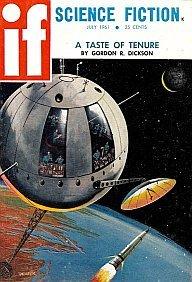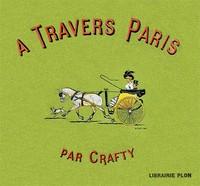Read this ebook for free! No credit card needed, absolutely nothing to pay.
Words: 8536 in 4 pages
This is an ebook sharing website. You can read the uploaded ebooks for free here. No credit cards needed, nothing to pay. If you want to own a digital copy of the ebook, or want to read offline with your favorite ebook-reader, then you can choose to buy and download the ebook.


: The Real Hard Sell by Stuart William W - Science fiction; Short stories; Robots Fiction; Sales personnel Fiction Science Fiction
INTRODUCTION 7
INTRODUCTION
"To attack always, to attack everywhere, and to overlap in the attack" is the essential principle of German military training. This is the principle which is acted upon when hostilities definitely open and the diplomatist retires into the background. There is only one means by which it can be carried into effect, and that is to have overwhelming numbers of men ready to pour into the field and bear down opposing forces by sheer weight. At Li?ge, at Namur, at Charleroi, or in the Vosges, the mowing down of the invading hosts by rifle or cannon must have seemed to the defensive troops as wearying and useless a task as cutting off the heads of a hydra; for two German soldiers appeared to rise out of the ground for every single one that fell.
This was one great advantage with which the German army entered upon the war. For years past strategic railways have been under construction on the Belgian border--railways designed, not for the conveyance of goods or passenger traffic , but for the conveyance of German troops from Cologne and other places to north-east France through Belgium and Luxemburg. The plans of the German General Staff were admirably conceived. One observer compared the advance of the invading army to a human tidal wave spreading through the valley of the Meuse. True, there were one or two small hitches. It was clear from the stories told by the prisoners taken by the Belgians at Li?ge that the German commissariat was unexpectedly defective. Again, insufficient preparations had been made for besieging Li?ge itself, and it was not for some days that it was found possible to bring up the great siege guns which should have been there from the very beginning. These faults, however, were not the result of negligence so much as of conceit and of too great a belief in the invulnerability of the German arms. According to a message quoted in the present volume, the Kaiser waved his hand through the air and said: "I will go through Belgium like that." He did not; and the delay consequent upon the stubborn defence of Li?ge interfered with the German plans at the outset and gave the French time to complete their mobilisation. The effects of this delay are, indeed, incalculable, especially in view of the unexpected rapidity of the Russian mobilisation, and General Rennenkaempf's advance through East Prussia. Still, once the Germans realised that they had to meet resistance in Belgium it must be acknowledged that they took immediate steps to break it down. Large siege guns were hurried to the front, with the result, so far as can be ascertained from the meagre news which is allowed to pass the Censors on both sides of the Channel, that four of the strongest forts at Namur fell after a three days' siege. Nothing, at first, seemed to be able to stop, or even to check, the advance of 2,000,000 Teutons.
Although only a few details have been allowed to leak out, the admitted facts all go to show that the German onslaught on France through Belgium has been successful, but delayed. It is said that the invaders expected to be in Paris within two weeks of crossing the frontier, after which they expected to be able to turn the bulk of their mighty army towards Russia before the Tsar's forces could be properly mobilised--before, at any rate, they could take the field and begin their advance into East Prussia. To this extent the plan has miscarried, thanks to the gallant resistance of Li?ge. Unless the Germans were in full possession of the railways at Li?ge and Namur an entry into France would have been dangerous, since the free passage of reinforcements could not be guaranteed. As it was, the Russians were in possession of Eydkuhnen before the Germans were in possession of Li?ge; and the German advance on Namur coincided in point of time with the Russian advance on Insterburg.
While the German plans have miscarried to this extent, it would be foolish not to realise that they have succeeded in other respects. A glance at the map will show this; for if the official communiqu?s tell us little else they tell us, at least, what the approximate position of the armies was at given dates. On August 15th and 16th, for instance, and even, we may assume, on the 17th, the German army stretched in an irregular line from Maastricht to Alt Breisach, through Huy, Arlon, Longwy, and Metz. The southern portion of it, composed chiefly of Bavarians, lay from Ch?teau Salins to Strassburg, and thence to the end of the long line in the neighbourhood of Alt Breisach. The French army lay opposite in a nearly parallel line. French regiments had reached and reinforced the Belgian lines at Malines and Louvain, and the main body of the French army was spread out along a front of nearly three hundred miles from Tirlemont to M?lhausen, via Namur, M?zi?res, Verdun, Sarreburg, Cirey, and Colmar.
As the Germans had opened their southern campaign by invading French territory at Cirey and Longwy, the position of the French army at this time makes it clear that General Joffre had taken the offensive. The Germans had been driven back over their original lines; Alsace had been invaded by the French; Altkirch and M?lhausen had been captured, and even Strassburg was menaced. This right wing of the French forces--the wing which had been thrust forward into Alsace--was based, of course, on the impregnable fortresses of Belfort and Epinal. As the subsequent developments showed, this invasion of Alsace was a strategic error, and this was acknowledged almost in so many words before a week had passed.
Why, at this early stage, a forward move was made in this direction was never explained. There were critics who not unreasonably called it "fancy work." Certainly, it was to be expected that the Germans would advance from their southern base of Strassburg, and their central base of Metz; but the really serious work of the campaign, as everybody expected, was to be in the north-east. The advance into Alsace gave General Joffre an opportunity of issuing a proclamation to the Alsatians which, in view of their treatment by the Germans for more than a generation, naturally rejoiced them. But it was an advance which had to be paid for in another direction, when the main body of the German army began to make its way across the Upper Meuse.
The result of the first stages of the Charleroi fighting made one or two things evident. In the first place, it was then known that the strength of the opposing German armies had been considerably under-estimated; they had succeeded in bringing up very strong reinforcements, with field guns and adequate munitions, through Li?ge. Secondly, it was seen that the French had not advanced northwards in sufficiently strong force. General Joffre had concentrated on Alsace and the Ardennes, rather than on the Namur front. The official statement published in Paris shows the French position at the commencement of the battle:
An army starting from Northern Woevre and proceeding towards Neufchateau is attacking the German forces which have marched through the Grand Duchy of Luxemburg on the right bank of the Semois, and are going in a westerly direction.
Another army, which had started from the region of Sedan, is crossing the Ardennes, and is attacking the German forces which are marching between the Lesse and the Meuse.
A third army, from the region of Chimay, has begun an attack on the German right between the Sambre and the Meuse. This army is supported by the English army, proceeding from the Mons region.
Free books android app tbrJar TBR JAR Read Free books online gutenberg
More posts by @FreeBooks

: The Lovers Assistant; Or New Art of Love by Fielding Henry Ovid BCE Jones Claude Edward Editor - Seduction Poetry


: Mammals of Mesa Verde National Park Colorado by Anderson Sydney - Mammals Colorado Mesa Verde National Park Animal; Animals-Wild-Mammals






